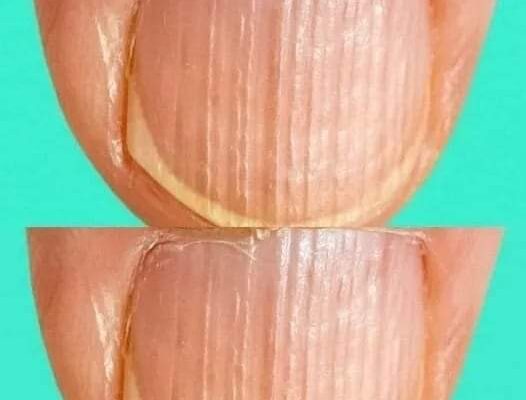Our body often reflects our internal health, with every part, from hair to skin to nails, offering clues about our well-being. Today, we’re focusing on nails—specifically, those with noticeable stripes, which can range from harmless indicators to signs of underlying health issues.
Understanding Striped Nails
Stripes on nails, though common, can be puzzling. They might range from harmless vertical lines associated with aging and skin dryness to signs of conditions needing medical attention. Here’s a breakdown:
Vertical Stripes
These lines generally appear as we age, linked to the natural drying process and cellular turnover. Vertical grooves can often be seen on the nails of older adults, reflecting skin health as it loses elasticity and moisture with time. Such lines may also indicate factors like eczema or dehydration, reminders to hydrate and care for our skin, which in turn keeps nails healthier.
Beau’s Lines and Peripheral Vascular Disease
Beau’s lines are horizontal indentations on the nails, potentially linked to poor circulation from peripheral vascular disease. This condition hinders oxygen and nutrients from nourishing the nails. Identifying these lines can be a critical first step toward addressing circulation issues with a healthcare provider.
Zinc Deficiency
As a key player in cellular regeneration, zinc is essential for nail health. A zinc deficiency can lead to slower nail growth and structural issues. Boosting zinc intake, through diet or supplements, may improve nail strength and reduce abnormalities over time.
How to Care for and Prevent Stripes on Nails
If you notice stripes on your nails, consider the following steps to improve nail health:
1. Consult a Dermatologist
A dermatologist can assess your nails to determine if any underlying health conditions, like hypothyroidism or a deficiency, are contributing factors. They might suggest medications or supplements if necessary.
2. Prioritize Hydration
Moisturizing your nails and cuticles can prevent dryness that leads to grooves or lines. Apply hand cream regularly, especially if you have naturally dry skin or eczema. Oils like olive or coconut oil can be particularly effective—apply before bed to allow nails to absorb their nutrients overnight.
3. Balance Your Diet
Your nails benefit from a nutrient-rich diet. Foods like salmon, nuts, avocados, and leafy greens (think broccoli, spinach, and kale) provide essential vitamins and minerals to keep nails strong and smooth.
4. Exercise and Oxygenation
Regular exercise boosts blood flow and oxygenation, nourishing your entire body, including your nails. Improved circulation can play a role in reducing nail abnormalities over time.
5. Maintain Nail Hygiene
Good nail care practices include regular cleaning and trimming. You can also use a nail buffer to gently smooth existing grooves. Avoid long-term use of nail polish to allow your nails to “breathe,” as constant polish can contribute to dryness and discoloration.
6. Protect Nails from Excessive Moisture
Prolonged exposure to water can weaken nails and make them prone to stripes. Consider wearing gloves when washing dishes or handling cleaning solutions.
The Takeaway: Nail Care Reflects Health Care
Healthy nails often reflect overall well-being. From maintaining hydration to adopting a balanced diet and checking with specialists, these steps can support nail health and potentially reduce the appearance of stripes. Consistent care may improve both the health and appearance of your nails over time. Let us know if these tips help you enhance your nail health!



